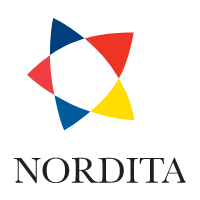14th Nordic Workshop on Statistical Physics: Biological, Complex and Non-Equilibrium Systems
Albano Building 3
Venue
Nordita, Stockholm, Sweden
Scope
This workshop series provides a “forum” where scientists in the Nordic countries working in the area of Statistical Physics can meet regularly. The meeting brings together experts interested in the broad spectrum of timely problems in Statistical Physics, ranging from fundamental aspects in the theory of non-equilibrium processes to modern applications in biophysics. Topics covered include diffusion problems, non-equilibrium transport, work relations and fluctuation theorems, large deviations, resetting, inference methods, soft condensed matter (colloids, liquid crystals etc.), self-assembly, population dynamics, physics of DNA and bio-molecules, single-molecule kinetics, dynamics and structure of networks, neuronal networks, quantum thermodynamics and many more.
The workshop will start on Wednesday morning at around 9.00 with registration and coffee/cake. It will end on Friday (early) afternoon. There will be a conference dinner on Thursday evening.
Invited speakers (*to be confirmed)
| Tobias Ambjörnsson (Lund University) | Ludvig Lizana (Umeå University) |
| Luiza Angheluta-Bauer (University of Oslo) | Michael A Lomholt (University of Southern Denmark) |
| Amin Doostmohammadi (Niels Bohr Institute) | Stefano Sarao Manelli (Chalmers University) |
| Alessia Ferraro (Nordita) | Sreekanth Manikandan (Gothenburg University) |
| Maryam Ghasemitarei (Aalto University) | Bernhard Mehlig (Gothenburg University) |
| Henning Kirchberg (Chalmers University) | Namiko Mitarai (Niels Bohr Institute) |
| Soon Hoe Lim (Nordita) |
Special Guest
Alberto Imparato (Trieste)
Registration
If you want to participate in the workshop, please fill in the registration form.
Registration deadline: Feb 23, 2025
There is no registration fee.
There is a (very) limited number of travel grants available for PhD students and young Postdoc fellows from the Nordic countries. If you are interested in such a grant, please contact the organizers via email, and provide a rough estimate of your expenses (travel and/or accommodation).
For administrative reasons you have to register before February 16, if you want to apply for such a travel grant.
Depending on interest and time constraints we *might* set up a session dedicated to short talks by junior researchers (PhD students, young Postdocs). During registration you have the possibility to indicate if you are interested in contributing such a short talk (likely around 5-10 min).
Please be aware that scammers sometimes approach participants claiming to be able to provide accommodation and asking for credit card details. Do not give this information to them! If you are in any doubt about the legitimacy of an approach, please get in contact with the organizers.
Sponsored by:

